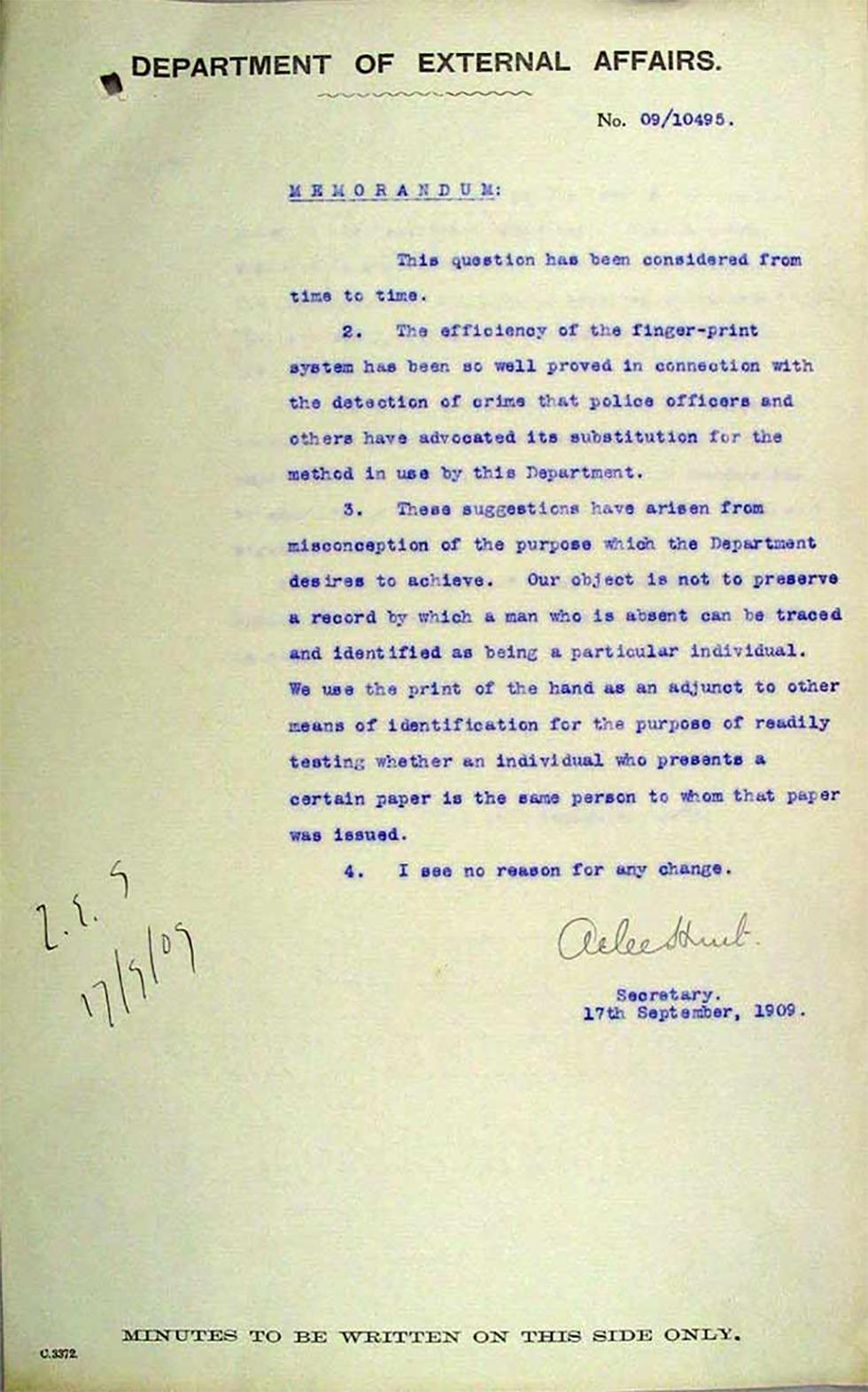
Memorandum regarding the efficiency of the fingerprint system as a means of identification.
Aboriginal and Torres Strait Islander people should be aware that the National Archives' website and collection contain the names, images and voices of people who have died.
Some records include terms and views that are not appropriate today. They reflect the period in which they were created and are not the views of the National Archives.


Memorandum regarding the efficiency of the fingerprint system as a means of identification.
[Letterhead in black ink:] DEPARTMENT OF EXTERNAL AFFAIRS
No. 09/10495.
[Underlined heading:] MEMORANDUM:
This question has been considered from time to time.
2. The efficiency of the finger-print system has been so well proved in connection with the detection of crime that police officers and others have advocated its substitution for the method in use by this Department.
3. These suggestions have arisen from misconception of the purpose which the Department desires to achieve. Our object is not to preserve a record by which a man who is absent can be traced and identified as being a particular individual. We use the print of the hand as an adjunct to other means of identification for the purpose of readily testing whether an individual who presents a certain paper is the same person to whom that paper was issued.
4. I see no reason for any change.
[Handwritten signature:] Atlee Hunt.
Secretary.
17th September, 1909.
[Handwritten annotation in black ink:] Z.E.S. 17/9/09
[Printed footer:] MINUTES TO BE WRITTEN ON THIS SIDE ONLY.
C.3372
Learn how to interpret primary sources, use our collection and more.
